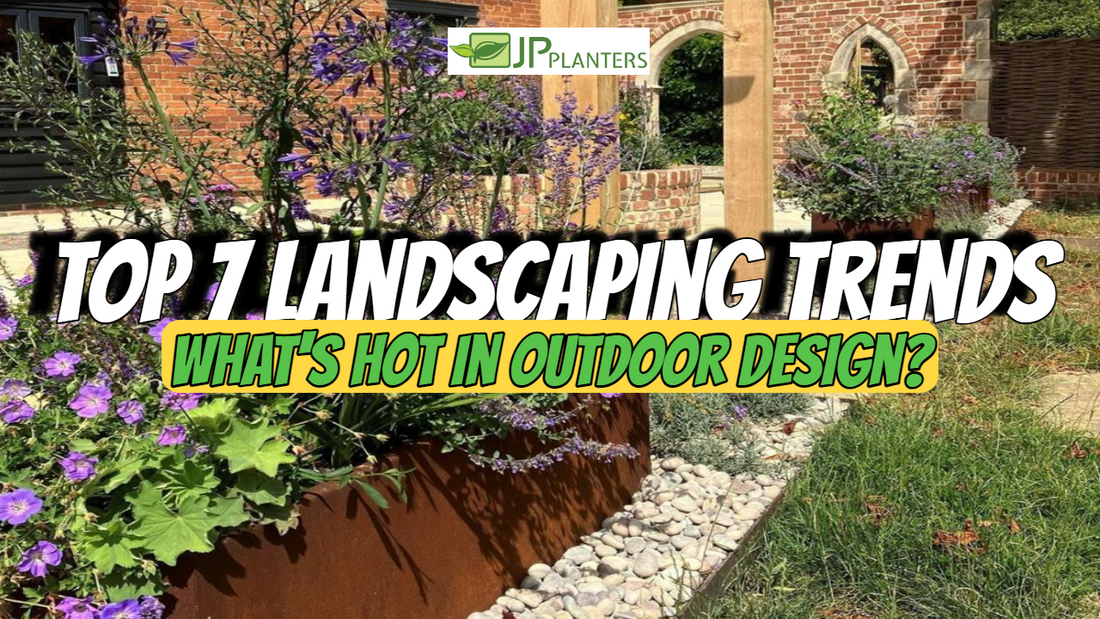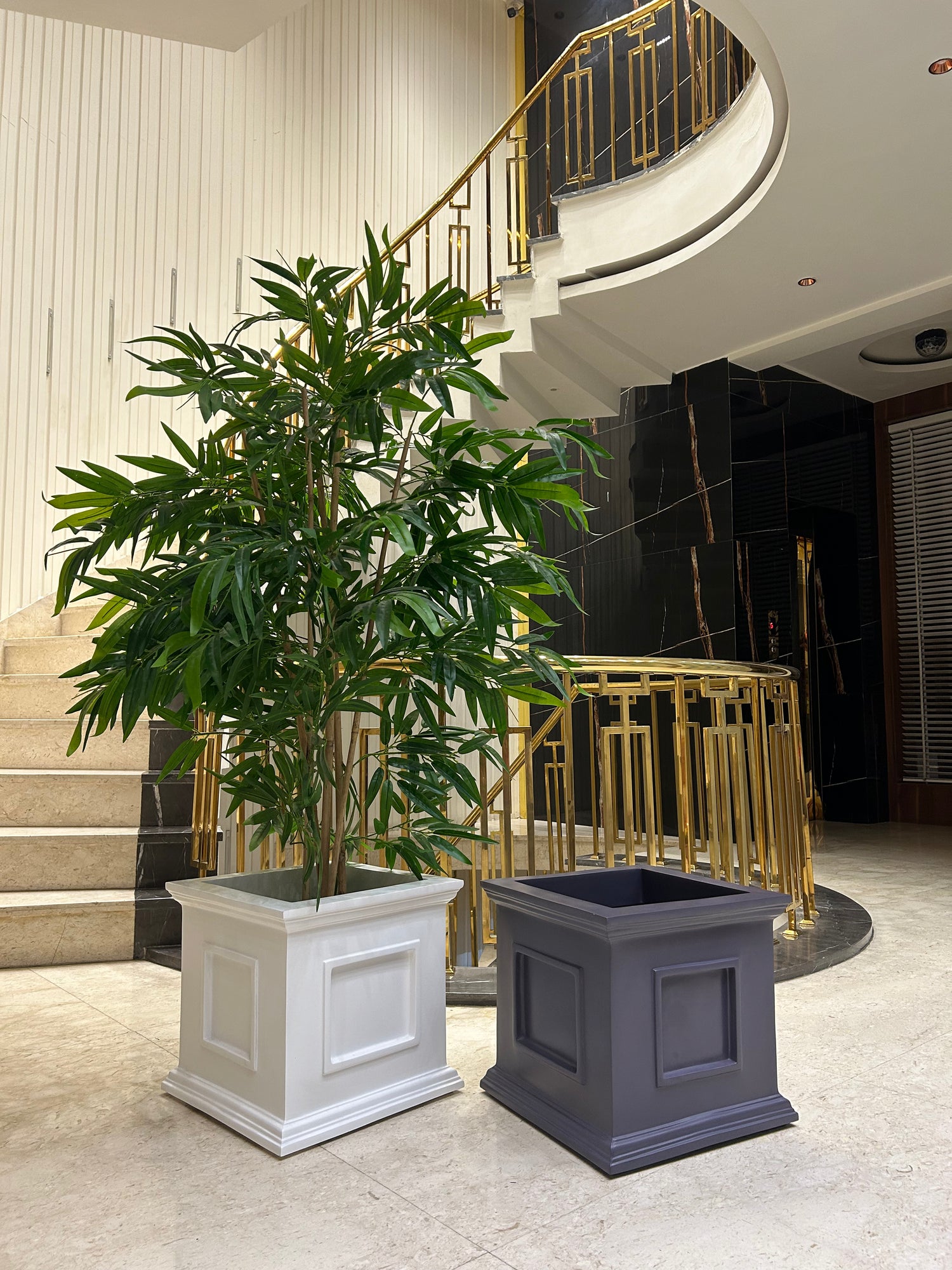
Top 7 Landscaping Trends : What's Hot in Outdoor Design?
Share
Over the past few years, the significance of outdoor spaces has evolved dramatically. As homes became sanctuaries during the pandemic, outdoor areas were reimagined as extensions of indoor living spaces. Today, gardens, terraces, and backyards are not just patches of green; they are crucial elements of our homes that provide comfort, relaxation, and a place to connect with nature. As we move into 2024, the focus on outdoor design continues to grow, reflecting a shift towards creating versatile, sustainable, and aesthetically pleasing spaces that cater to various needs and lifestyles.
Whether you're a homeowner looking to revamp your backyard, a landscape designer seeking fresh inspiration, or a gardening enthusiast eager to keep up with the latest trends, here’s a deep dive into the top 7 landscaping trends of 2024 that promise to transform outdoor spaces into stunning havens.
1. Sustainable Landscaping: A Green Approach
Sustainability is no longer a buzzword; it’s a necessity. In 2024, sustainable landscaping will dominate outdoor design trends, with an emphasis on reducing environmental impact while enhancing natural beauty.
Why Sustainable Landscaping?
Sustainable landscaping involves using environmentally friendly practices such as xeriscaping, using native plants, minimizing water use, and choosing materials that have a low carbon footprint. This approach not only conserves resources but also reduces maintenance costs and creates a habitat for local wildlife.
How to Implement Sustainable Landscaping:
- Use Native Plants: Opt for local flora that requires less water and is naturally resistant to local pests and diseases. This reduces the need for chemical treatments and promotes a healthy ecosystem.
- Water-Wise Gardening: Install drip irrigation systems or rain barrels to conserve water and direct it efficiently to plants.
- Choose Sustainable Planters: Incorporate FRP Planters and Fiber Planter Pots that are made from eco-friendly materials and are highly durable. These planters not only offer versatility in design but also minimize environmental impact.
2. Multi-Functional Outdoor Spaces

With more people working from home, the need for multi-functional outdoor spaces has skyrocketed. Homeowners are looking to maximize the use of their outdoor areas by creating zones that serve multiple purposes—think outdoor dining, relaxation areas, and even outdoor offices.
Why Multi-Functional Spaces?
Multi-functional outdoor spaces allow homeowners to enjoy their gardens in various ways, making them more valuable and versatile. This trend aligns with the modern desire for flexibility, comfort, and practicality.
How to Create Multi-Functional Outdoor Spaces:
- Define Zones: Use different types of Outdoor Planters to create visual boundaries between areas designated for dining, lounging, or working.
- Opt for Versatile Furniture: Choose furniture that can serve multiple purposes, like benches with storage or foldable tables that can be easily tucked away when not in use.
- Incorporate Large Planters: Use big planters strategically to provide shade, privacy, or a focal point in the garden.
3. Incorporating Water Features
Water features continue to be a top trend, but in 2024, the focus is on integrating them in a more eco-friendly way. From serene koi ponds to elegant waterfalls and modern water walls, these elements add a sense of tranquility and movement to any garden.
Why Water Features?
Water features not only enhance the visual appeal of a garden but also create a calming ambiance that promotes relaxation and well-being. They attract birds and butterflies, contributing to local biodiversity.
How to Incorporate Water Features:
- Choose Recirculating Water Systems: These systems reuse water, minimizing waste and reducing the environmental footprint.
- Integrate with Planters: Combine water features with landscape planters like FRP Planters to create a cohesive design. Use planters to grow aquatic plants or to frame the water feature aesthetically.
- Utilize Modern Materials: Opt for lightweight and durable materials such as Fiber Planter Pots that can withstand water exposure without degrading.
4. Outdoor Lighting Innovations

Outdoor lighting has gone beyond mere functionality to become a key design element in landscaping. The trend for 2024 focuses on creative lighting solutions that highlight architectural features, create mood, and extend the usability of outdoor spaces.
Why Outdoor Lighting?
Good lighting design can make a garden more inviting after dark, increase safety, and highlight key features like trees, sculptures, or water elements. Innovations like smart lighting systems and solar-powered lights make outdoor illumination both stylish and sustainable.
How to Use Outdoor Lighting:
- Layered Lighting: Use a mix of ambient, task, and accent lighting to create depth and interest in your outdoor space. For example, pathway lights, string lights, and spotlights can be combined to highlight different areas.
- Solar Lights: Embrace eco-friendly options such as solar-powered lights that harness natural energy and reduce electricity costs.
- Pair with Planters: Position lights near big planters or gardening pots to cast interesting shadows and create dramatic effects.
5. Smart Gardens: Integrating Technology
As technology continues to evolve, gardens are getting smarter. From automated irrigation systems to plant health monitors and smart garden hubs, technology is playing an increasingly important role in modern landscaping.
Why Smart Gardens?
Smart gardens simplify maintenance, conserve resources, and ensure optimal growth conditions for plants. They offer convenience and can be easily controlled via smartphones or voice-activated assistants.
How to Create a Smart Garden:
- Install Automated Irrigation: Use weather-based controllers to adjust watering schedules based on local weather conditions, ensuring efficient water use.
- Smart Planters: Choose planters like FRP Planters that come with built-in sensors to monitor soil moisture, temperature, and sunlight exposure, providing real-time data to help keep plants healthy.
- Garden Apps: Utilize apps to plan, manage, and maintain your garden effortlessly.
6. Embracing Natural Materials
The trend towards natural materials in landscaping is gaining momentum. From natural stone pathways to wooden decks and pergolas, these materials add warmth and texture to outdoor spaces, creating a connection to nature.
Why Natural Materials?
Natural materials are sustainable, durable, and aesthetically pleasing. They blend seamlessly with the outdoor environment, adding organic textures and a sense of timelessness to gardens.
How to Incorporate Natural Materials:
- Use Stone and Wood: Incorporate elements like gravel, flagstone, or reclaimed wood to create natural pathways, borders, and structures.
- Complement with Planters: Choose Fiber Planter Pots in earthy tones or textures to enhance the natural aesthetic. These planters are lightweight yet robust, making them ideal for any garden design.
- Create a Natural Retreat: Use big planters filled with lush greenery to create secluded nooks for relaxation or meditation.
7. Customized Planters: Elevating Aesthetics
Planters are no longer just practical items; they are becoming key design elements in their own right. In 2024, customized and unique planters are trending, allowing homeowners to express their style and enhance their garden's aesthetic.
Why Customized Planters?
Customized planters offer flexibility in terms of size, color, shape, and material, making it easier to match the overall theme and style of the garden. They can serve as focal points or help create a cohesive design.
How to Use Customized Planters:
- Select Unique Shapes and Colors: Opt for FRP Planters and Outdoor Planters in bespoke shapes and colors that complement your garden's theme.
- Combine Different Sizes: Mix and match big planters with smaller pots to create an interesting visual contrast and depth.
- Focus on Material: Choose planters made from durable materials like fiberglass or corten steel to withstand outdoor conditions while maintaining their appearance.
Conclusion: Enhancing Your Outdoor Spaces in 2024
As we step into 2024, these landscaping trends offer innovative ways to transform outdoor spaces into beautiful, functional, and sustainable extensions of your home. From embracing green practices with FRP Planters to integrating smart technology and creative lighting solutions, these trends cater to diverse tastes and needs, ensuring that there’s something for everyone.
Ready to elevate your outdoor space? Explore our wide range of Outdoor Planters, Fiber Planter Pots, and big planters to bring these trends to life in your own garden. Visit our website to shop now and create the garden of your dreams!



